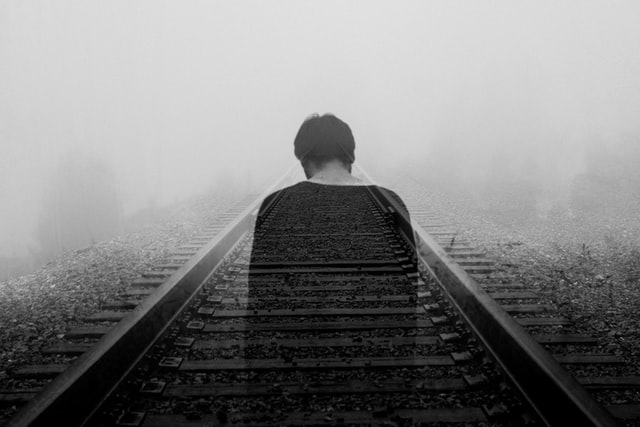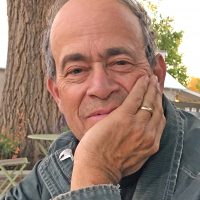Before you rush frantically to call 911, the incident in question occurred in 1966 when I was a sophomore in high school.
I’m now 72 years old, and besides never owning a gun in my life, I have been a fierce and outspoken advocate for gun control. I have also been a teacher for over 35 years—a career that has included mentoring high school students and giving seminars about navigating those fraught adolescent years.
But at age 16, I fell into the black hole of depression. I became very withdrawn and, as a result, was almost invisible to my classmates at my small private school. Suddenly, I found myself not being invited to parties or other social events and spending Saturday nights hugging the sidelines at the weekly dances for young people held throughout New York City.
As a result, I began to harbor dark thoughts about suicide, which began to spiral in my isolation. One of them envisioned me going to my school with a high-powered rifle and killing my classmates, especially those I fantasized as being my oppressors. Then I would kill myself. “That’ll show ‘em” would be my final thought before I pulled the trigger.
I was not, however, “mentally ill,” a term that’s being thrown around irresponsibly by both sides of the gun debate. I was a lonely teenager and at that age, every emotion seems immediate, never-ending, and devastating. As older adults, we’ve become used to the highs and lows of life and know that neither lasts forever. Adolescence does not grant that long-range perspective.
Not surprisingly, my parents had no idea what was going on inside the mind of their son, even my father who was a prominent child psychologist, albeit of the toxic Freudian variety. As long as I earned good grades and avoided getting in trouble, they assumed all was well; their attitudes were based on the need for good appearances.
During that year, my mother photographed me wearing a new double-breasted blue blazer. She was so proud of the image (Danny smiling in his new suit) that she had it framed and displayed in our living room for the next 40 years. One day in 2003, when she was cooing for the umpteenth time over the photograph, I decided to have it out with her.
Mom (sighing): “You looked so nice in that suit, Daniel.”
Daniel: “Mom, are you aware that I was contemplating suicide throughout that year?”
Mom: “Yes, but you looked so nice.”
From her limited perspective, killing myself would have been acceptable as long as I looked nice while doing it. No doubt, I would have been buried in that impressive blue blazer. Admitting my feelings to my father was out of the question. Being committed to an institution was a common fate for any kid behaving in a seemingly irrational way at that time. It happened to a few of my friends. Besides, teenagers then never confided their secret thoughts or feelings to their parents (do they now?).
In 1966, school gun massacres were thankfully unheard of, but that summer, Charles Whitman, a former Marine, ascended the University of Texas tower in Austin and murdered 14 people with a high-powered rifle before being killed himself by police. The crime shocked the nation, it being the worst mass shooting by a lone gunman in American history up to that point. Now, of course, gun massacres by lone gunman are a weekly event.
I could have been the first, had I carried out my plan.
Since I am writing this essay 56 years later, it’s safe to assume I never did. Looking back, there are three reasons why:
For one, there were no guns in my house. There were also no guns in the homes of my relatives or family friends, all upscale urban Jewish professionals. Although the city during this era was dangerous, gun ownership wasn’t (and still isn’t) a part of that culture.
Secondly, the internet didn’t exist so there were no helpful adults in cyberspace advising me on the best way to obtain such a weapon or how to effectively commit mass murder.
The third reason, I consider the most important. I had one close friend whose companionship kept me from going over the edge. Joanie was a girl my age who decided that being friends was more important than being in a relationship. She was correct. Living nearby, we would get together after homework was done, sit on her bed, and play double-solitaire as we laughed, cried, gossiped, and told jokes for hours on end. I never shared with her my lethal plot, but to this day, I am convinced that just to have someone hold me energetically with unconditional love healed a psychic wound, even if we weren’t aware of it at the time.
Fortunately, my life improved in the years following 1966. As a junior, I got involved in drama, which gave me a purpose and a creative community. My senior year saw me hosting the parties everyone wanted to be invited to. I never again entertained such murderous fantasies and forgot about them until April 20, 1999, the day of the Columbine school massacre in Colorado.
The next day, I wrote a guest editorial for my local newspaper entitled “High school has always been Hell,” in which I admitted to the events described here. At the time, I was teaching fifth grade and thus worried I would either get fired or arrested as a public safety threat. Instead, I received a phone call from the county mediation collaborative, which held an annual conference teaching conflict resolution skills to middle and high-schoolers. “We read your op-ed,” they said, “And want you to teach a workshop at our conference.”
I did this for the next few years. My workshop was entitled “Can you see the Real Me,” which explored the high school hierarchy of cliques, in-groups, and outcasts. I would end by admonishing the kids to look out for each other. “Don’t assume that even the so-called ‘Cool kids’ have it made,” I warned. “Anyone might be suffering, even if they don’t show it. A simple act of kindness can go a long way or even save a life.”
Or, as we now know, several lives.
~
Please consider Boosting our authors’ articles in their first week. Boosting can help them win Elephant’s Ecosystem and get paid for writing and sharing their story.
~


 Share on bsky
Share on bsky





Read 23 comments and reply